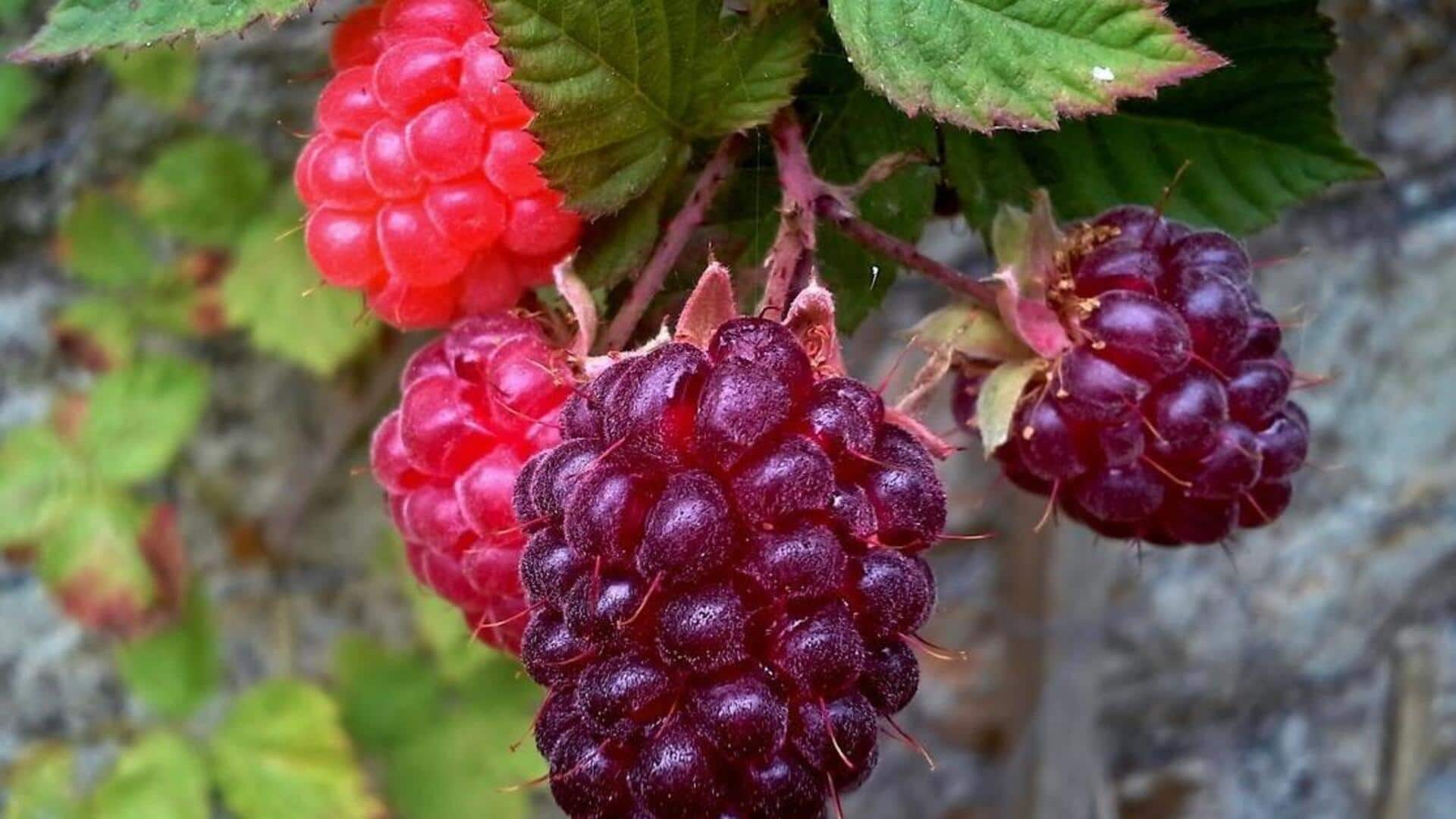
How to grow luscious loganberries in outdoor planters
What's the story
Cultivating loganberries in outdoor planters is a fulfilling experience for any green thumb. These berries, a hybrid of blackberries and raspberries, boast a distinctive flavor and are a powerhouse of nutrients. This article offers a comprehensive guide on successfully growing these berries in the comfort of your outdoor space. It covers choosing the appropriate planters, preparing the soil, addressing watering needs, and managing pests.
Planter selection
Choosing the right planter
Choosing the right planter is key to your loganberries' success. It needs to be big enough—at least 18 inches deep and 24 inches wide—so the roots have plenty of room to spread out. Make sure it has lots of drainage holes. You don't want water sitting at the bottom and causing root rot. Pick a material like wood or terracotta that lets the roots "breathe."
Soil preparation
Preparing the soil
Loganberries prefer well-draining soil with a slightly acidic pH (5.5 to 6.5 is ideal). To create an ideal mix, combine three parts garden soil, one part sand, and two parts compost or well-rotted manure. This blend promotes excellent drainage while supplying the necessary nutrients for robust plant growth. It's beneficial to test your soil's pH before planting, so you can make adjustments if needed.
Watering needs
Watering requirements
Adequate moisture is key to healthy loganberries, but be careful not to overwater as this can lead to root diseases. Water your plants deeply once or twice a week, adjusting as necessary depending on the weather. In periods of intense heat, increase watering, and scale back during rainy periods. Aim for consistently moist but not waterlogged soil, this will create the best environment for growth.
Pest control
Managing pests naturally
Loganberries are prone to common pests including aphids and spider mites. For natural pest control, consider introducing beneficial insects like ladybugs to your garden. These helpful critters naturally prey on harmful pests without causing harm to your plants. Neem oil sprays provide an organic option to combat infestations. Just remember to apply it early in the morning or late in the evening to prevent harm to beneficial insects.
Fertilization
Fertilizing for better yield
Feeding your loganberry plants will promote healthier growth and better fruit production. Apply a balanced fertilizer (10-10-10) at planting time and again at the start of each spring season thereafter. It would cost you around $20 per bag, depending on brand and quantity purchased. Be careful not to over-fertilize as this can cause excessive foliage growth at the expense of fruit production.